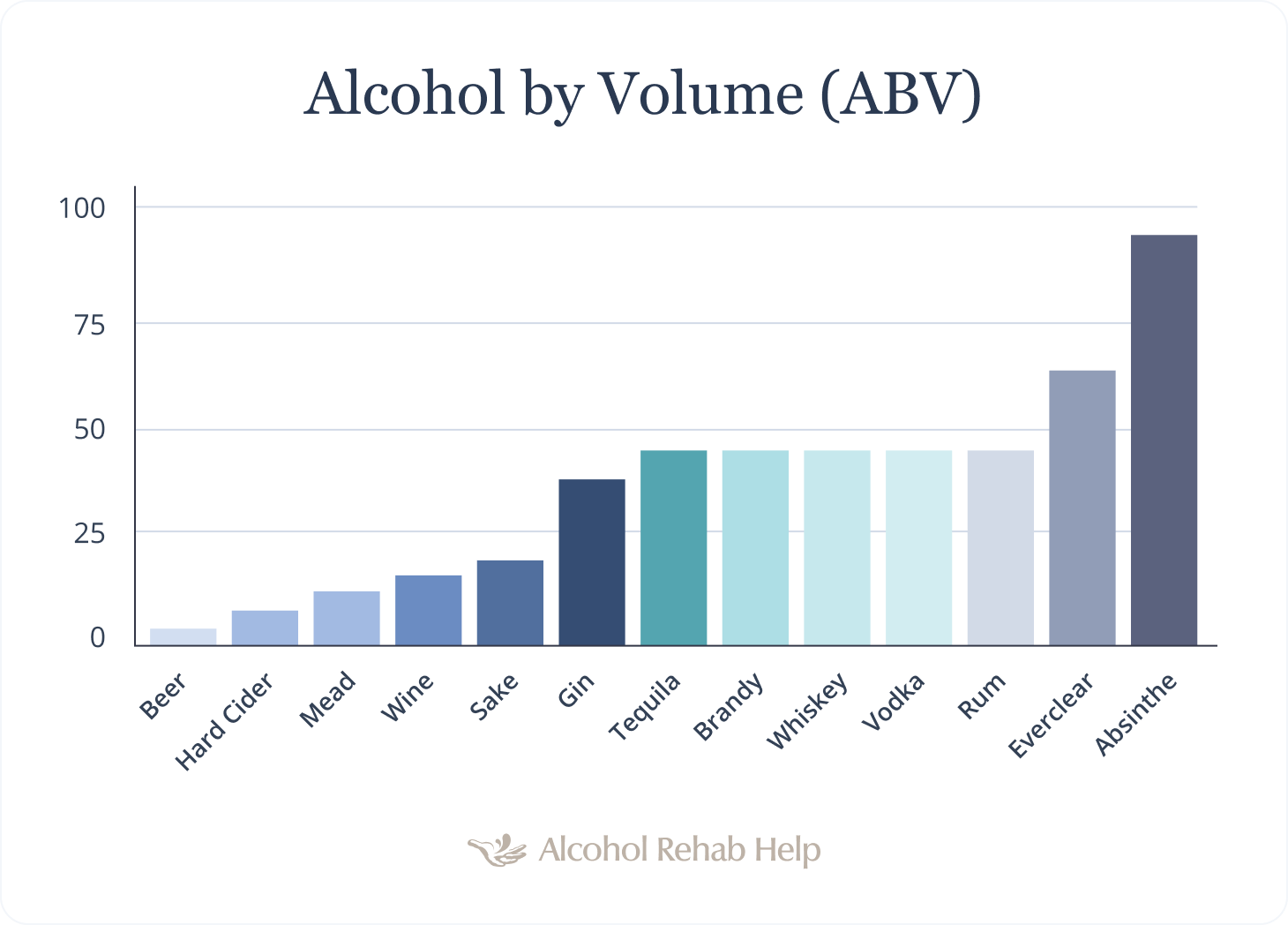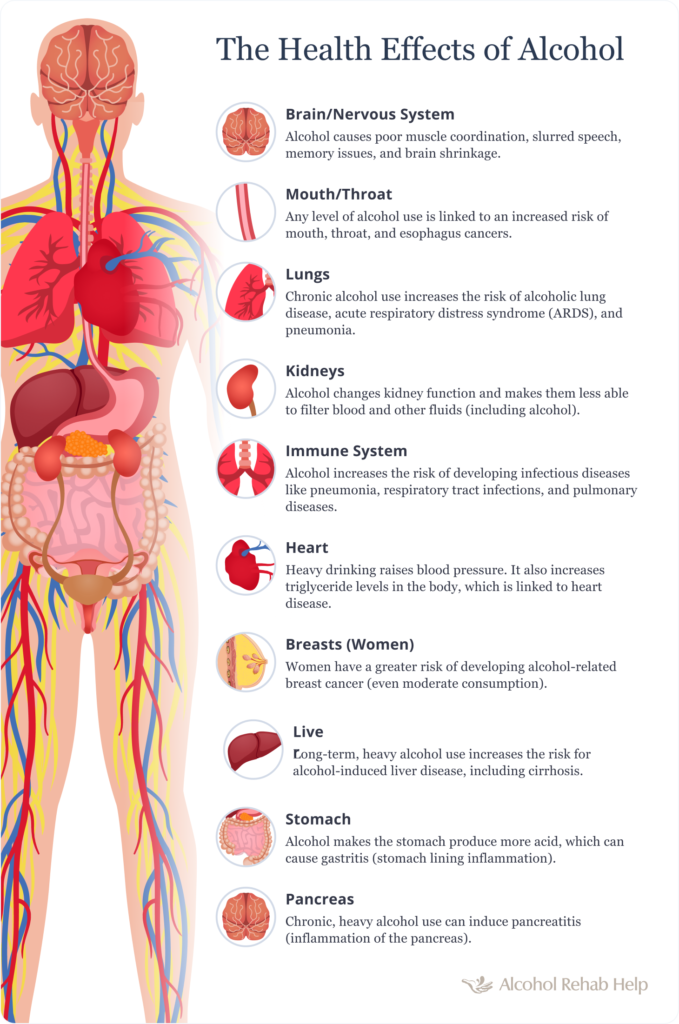Alcohol & Health
Treatment
Helping Alcoholics


Medically Reviewed by Annamarie Coy, BA, ICPR, MATS
In this article
Alcohol is a natural byproduct of sugar and plant fermentation. It has a wide variety of uses, but it can be distilled into drinkable substances such as:
Drinking alcohol can be fatal, depending on the amount you drink. Consult a doctor or treatment center to learn about available treatment options and resources for alcohol abuse and alcoholism.
Contact a poison control center or 911 if you have taken an alcohol-based substance not intended for consumption.
Ethyl alcohol or ethanol is a plant-based fermentation widely used in spirits, beers, and ciders. Out of the three different types of alcohol, ethyl alcohol is the only one that humans can consume.
Isopropyl alcohol is a chemical compound made from water and propene. It’s commonly used as a disinfectant, made through a hydration reaction or hydrogenating acetone.
Methyl is the purest form of alcohol, typically used as a solvent in industrial or commercial instances. It is produced synthetically by a multi-step process involving natural gas and steam reforming.
Over 3 million people use BetterHelp. Their services are:
Answer a few questions to get started

Distilled alcohol forms from heating the plant matter at high temperatures to produce collected and bottled steam. This process creates higher-strength and higher-proof alcohol.
In contrast, undistilled alcohol is made by fermenting sugar or plant matter and yeast with water and heat. This process produces ethanol as a byproduct. It is less pure and lower in strength.

Distilled drinks, also known as spirits or hard liquor, vary in fermentation processes. They also have different ingredients and alcohol by volume (ABV).
Below is a list of popular distilled alcoholic spirits.

Undistilled alcoholic beverages are a staple in many cultures and regions worldwide. They’re also sometimes called fermented drinks.
Malt liquors or craft beers can have between 6% to 8% ABV. Other examples of undistilled alcoholic drinks include:
Among the different types of alcoholic drinks worldwide, beer is the most popular. After water and tea, beer is the most commonly consumed drink in the world. It’s also the oldest alcoholic drink in history.
They’ll connect you to an addiction and mental health counselor
Find a TherapistAnswer a few questions to get started


In the U.S., a standard drink is any drink that consists of 14 grams of pure alcohol. This amount is equal to about 0.6 fluid ounces or 1.2 tablespoons. Fourteen grams of alcohol is found in:
Different brands and types of alcohol vary in alcohol content. The effects of alcohol on the body depend on your blood alcohol content (BAC). The liver can only process approximately one standard drink per hour.
Although the standard drink amounts are useful for following health guidelines, they don’t always reflect the same serving sizes.
Likewise, while the alcohol concentrations listed are considered typical, there is significant variability in alcohol content within each alcoholic beverage.
BetterHelp offers affordable mental health care via phone, video, or live-chat.
Find a TherapistAnswer a few questions to get started

According to the Centers for Disease Control and Prevention (CDC), moderate drinking is considered drinking two or fewer standard drinks for men daily. Meanwhile, women should have one or fewer standard drinks a day.
They also recommend that you avoid drinking alcohol entirely. If you don’t, then you should drink in moderation.
Drinking five or more drinks for men or four or more for women within 2 hours is considered binge drinking. Consuming five or more drinks for men or four or more for women in a single session on 5 or more days a month is considered heavy drinking.

Drinking alcohol can lead to physical and mental side effects, ranging from short to long-term in duration.
If you experience severe side effects, seek medical attention. The long-term side effects of alcohol can be dangerous and require treatment.
Short-term effects of alcohol consumption include:
Long-term effects of alcohol consumption include:
Alcohol withdrawal happens when you suddenly stop drinking alcohol. Your body is adjusting to the lack of alcohol in your system.
It typically happens when you become dependent on alcohol, which can lead to unpleasant and potentially dangerous side effects, such as:
The severity of your withdrawal symptoms depends on how long you’ve been abusing alcohol. If you or someone you know is experiencing alcohol withdrawal, seek medical attention immediately.
If you think you’re drinking too much alcohol, consider seeking treatment, especially if you have become dependent on alcohol or are experiencing withdrawal.
It’s important to understand that people respond to treatment differently. Talk to a doctor or an addiction specialist. They can provide treatment programs that best suit your needs.
Available treatment options include:
There are three types of alcohol—isopropyl, methyl, and ethyl alcohol. However, only ethyl alcohol or ethanol can be consumed by humans.
Distilled alcoholic drinks include fortified wines and liquors. Meanwhile, undistilled or fermented beverages include wines, beers, etc.
Drinking too much alcohol can lead to dangerous physical and mental side effects. To avoid these side effects, consider drinking in moderation or abstaining from any alcoholic beverage completely.
In this article

